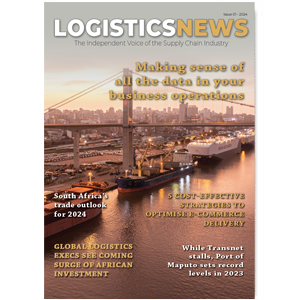COVID-19 has exposed the reliance of companies on their supply chains and weaknesses in business continuity management. What is the right way to deal with the next crisis? Thusang Mahlangu, CEO of Allianz in South Africa, shares his thoughts.
Admittedly, it is not easy to take a positive view of the COVID-19 pandemic. However, the fact that increasingly more companies are coming to realise that globalisation needs to be better managed and more resilient supply chains need to be built is a development that we as business insurers and risk consultants can only welcome – and one that we have been discussing with our brokers and clients through risk dialogues for years.
The extent to which supply chains came under pressure during the pandemic is illustrated by the situation faced by automotive manufacturers earlier this year. Due to a lack of semiconductors, many carmakers were threatened with production stoppages, delays in deliveries and measures such as short-time working. There were no short-term supply alternatives. Many manufacturers had to cut production. This was a further blow to the already hard-hit automotive industry.
No wonder that according to the respondents of the Allianz Risk Barometer 2021, improving business continuity management is considered the most important measure to make supply chains more transparent and resilient against incidents. This is followed by developing alternative and additional supplier connections, investing in digital supply chains, intensifying supplier selection and, where possible, specifically creating inventory and stockpiles for emergency production and delivery.
These findings are also in line with other surveys, for example, one conducted by FERMA among European risk managers last year: according to this survey, 46 percent of respondents expect to make changes to their supply chains after a pandemic, with 70 percent of them planning to find alternative suppliers. In addition, a survey by Allianz company, Euler Hermes, also found that a similar number of US and European companies are considering finding new suppliers (62 percent), while 30 percent favour moving their supply chains to countries closer to home.
Therefore, the direction seems clear – and can certainly be described as a paradigm shift in the global economy.
Supply chains put to the test
Questions about climate protection and compliance with human rights dominated the social discussion about supply chains before the pandemic; with the reputation of companies also receiving heightened focus. The coronavirus has now further increased the existing pressure to rethink supply chains.
Already during lockdowns in 2020, companies around the world were affected by restrictions and had to temporarily close their operations. Assembly line in the automotive industry had to shut down. Because of the plant closures, coronavirus presented global corporations with the major challenge of getting hundreds of supply links back on track. That was probably the most challenging task for production planners in the first half of 2020. Concern about renewed restrictions is still on the forefront of many boards of African companies.
To prepare for these developments, we see two opposing trends in supply chain strategies. One is nearshoring – moving production to a nearby country or closer to the sales market. The other is partial reshoring – attempting to shift production back to a country and associated suppliers. A small shift could have a big impact considering that Africa, for example, imported goods worth as much as US$560 billion in 2019. Whichever direction it ultimately takes for
African companies, the increased resilience of supply chains is to be welcomed. Not only does it help with insurability of risks, but it also helps to respond quickly to market trends.
Rethinking the contingency plans
Without a doubt, the pandemic has brought more focus to supply chains and a company’s overall business continuity management. In recent months, many companies have found that their contingency plans were quickly overwhelmed by the rapid pace of the pandemic and changes in public health measures. Repeatedly, it becomes apparent that contingency plans need to be constantly updated and tested so that they can be applied when needed. They must be cross-functional and integrated into a company’s risk management and strategic processes. COVID-19 also showed that organisations need to consider a broader range of scenarios to be prepared for future extreme business disruptions. Identifying and understanding potential ‘black swan’ events will be our collective challenge, but the central key to surviving such crises will be the ability of companies to respond quickly.
Scenario planning before the next crisis
So how can a company protect itself against the next crisis? Today, overall, medium- to large-sized African companies’ risk management is well positioned when it comes to traditional risks. However, these companies could be better positioned when it comes to protecting increasingly important intangible assets – something COVID-19 has taught us.
Above all, transparency makes risks identifiable, controllable, quantifiable and thus insurable – including the supplier-customer relationships.
It is crucial to think ahead and consider how the business, the market, the customers and suppliers could change in a given scenario. There is no way around scenario-based business continuity planning, which critically examines the company’s own set-up and the resilience of supply chains under different scenarios. Potential business impact must be understood, action plans should be in place and tested before the next crisis knocks on the door.
More than ever therefore, it is crucial to have an in-depth risk dialogue between the insurer and the insured and to be aware of the services provided in the area of loss prevention – from the evaluation of relevant information, using it for failure analyses, to the implementation of a targeted risk management strategy.




